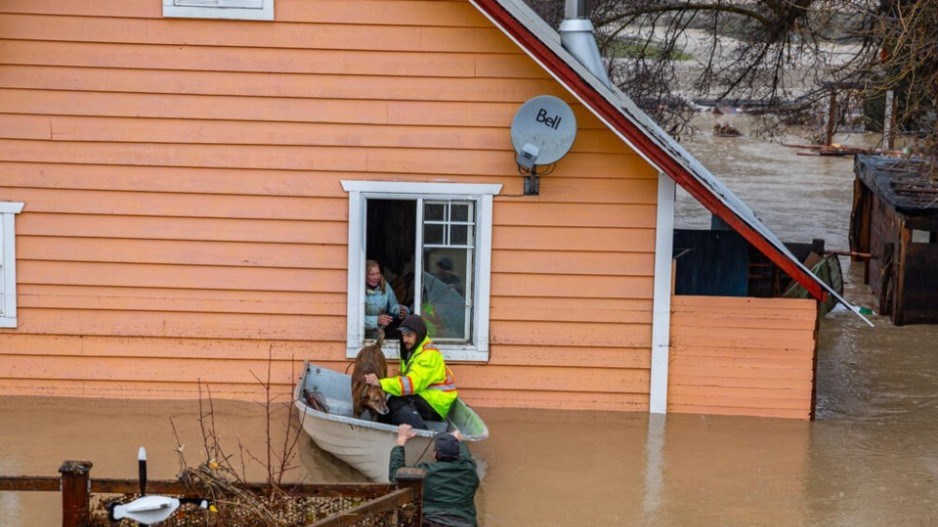Future heat waves are expected to extend the summer drought period and raise the risk of fall flooding in several hot spots across Canada, two new studies have found.
The research, led by Simon Fraser University postdoctoral researcher Sam Anderson, identified B.C.’s west coast, southern Alberta, southern Ontario and the Maritime provinces as regions whose rivers are most at risk to change.
Climate change is expected to drive longer, hotter and more frequent heat waves throughout the year. But in some areas where spring and fall temperatures are already close to zero, even a slight warming can trigger a snowmelt that then floods rivers with water.
“We’re shifting now into a world where all of a sudden the types of day-to-day variability through the cold season is going to start mattering more and more and more,” said Anderson.
B.C., Alberta rivers to see extended future dry season
In one , published in the journal Environmental Research Letters, Anderson and his SFU colleague, environmental science professor Shawn Chartrand, analyzed more than 80 years of historical data across six river systems in Western Canada.
The streamflow data was drawn from the Bow River at Banff, Alta., and from the Lillooet, Chilliwack, Similkameen, Stuart and Columbia rivers in B.C.
The researchers divided the data into baseline years — those characteristic of past freshets, where high levels of snowpack tended to melt late in the spring — and future proxy years, where melting started earlier in the spring.
In years where snowpack stuck around until the late spring, they found an incoming heat wave amplified flooding downstream. But when those heat waves came earlier in the spring, they tended to melt snowpack ahead of the freshet and suppress late spring floods.
Anderson said their findings suggest the impact of climate-driven heat waves will push Western Canada’s rivers toward longer dry seasons starting earlier in the spring. Heat waves that hit in the fall, on the other hand, will be more likely to turn storm systems into rain events at high altitudes. That, he said, could make flooding worse.
Impact of heat waves on river flows to be felt in already warmer regions
In their second , published in the journal Earth’s Future, Anderson said they wanted to understand how those seasonal changes to river flow will play out across Canada. To do that, they drew on a pan-Canadian dataset of more than 860 rivers observed over about 40 years.
Their analysis once again pointed to two times of year when heat waves tend to drive large increases in river flows.
In the spring, a one-degree rise in global temperatures combined with a heat wave could push spring snow melt weeks ahead of schedule in many Canadian rivers, said Anderson. The other vulnerable time of the year was found to be the fall, when a heat wave can either melt early season snow, or increase temperatures so precipitation falls as rain.
Not everywhere in Canada was found to be equally sensitive to these phenomena. Anderson said B.C.’s south coast, southern Alberta, southern Ontario and the Maritime provinces stood out in their data as substantial hot spots, where an increase in average temperatures can drive big changes in the role that heat waves will play.
“There are specific areas where this will be amplified, and one of those is like the Â鶹´«Ã½Ó³»Island [and] Lower Mainland region,” Anderson said.
He added: “If you think of a place like Vancouver, where if you get on the gondola to Grouse Mountain, you start and there's not very much snow at the bottom. And you get to the top, and there's a ton. That's telling you that small changes in temperature can really shift where there is or isn't snow, and where heat waves can or cannot drive increases to melt.”
Knock-on effects would impact wildlife, water systems and agriculture
Rachel White, an assistant professor at UBC’s Department of Earth, Ocean and Atmospheric Sciences who wasn’t involved in the study, said the research matters in a province like B.C., where much of the power is generated by hydroelectricity and systems are built on expectations of the past.
“We take advantage of the mountains as a natural reservoir of water so we can use it in the summer,” said White. “We’re losing this natural reservoir — not all of it but some of it — with climate change.”
She said there remain a lot of unanswered questions around the threshold between snow and rain. What happens to mountain snowpack, for example, as atmospheric rivers warm up and interact with a heat wave?
“How is that all going to impact water availability?” White questioned. “We really need to figure out how to manage that — here in Canada and around the world.”
Anderson said people and governments in sensitive areas will be forced to adapt to longer and more profound dry spells at one time of year, and potential floods at another.
Less water in the region’s rivers also means both longer fire seasons and warmer river water temperatures. That’s expected to impact everything that lives in those aquatic environments and thrives during summer months, including migrating salmon.
Anderson said he is also worried about places like southern Alberta, where an already relatively dry climate sits over one of the most productive agricultural areas of the country.
“It is very difficult to find any aspect of society or our natural world that isn't touched by heat waves,” he said.



